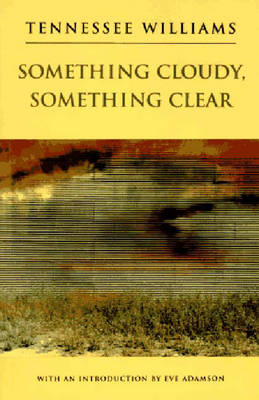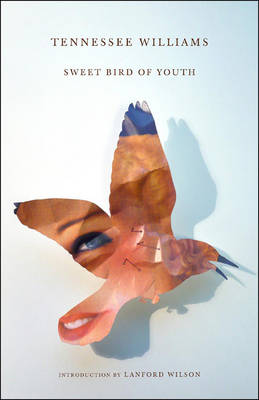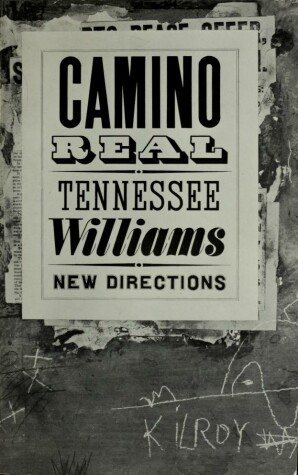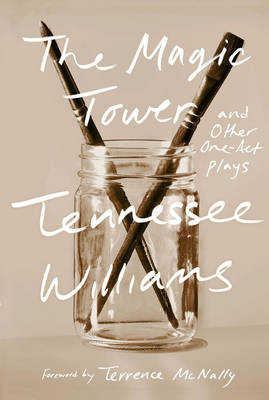New Directions Paperbook
1 primary work • 4 total works
Book 829
Something Cloudy, Something Clear is, as Tennessee Williams stated, "one of the most personal plays I’ve ever written." Set in Provincetown, Cape Cod, in 1940, the play records Williams’ experiences during that "pivotal summer when I took sort of a crash course in growing up." On the brink of becoming a successful playwright, Williams was also to "come thoroughly out of the closet" and meet Kip, his first great love. Something Cloudy, Something Clearbrilliantly reimagines that long ago time, now recollected through the filter of all the playwright’s successes and failures, joys and regrets. Eve Adamson, director of the original 1981 production, provides an insightful introduction in which she captures the play’s heart-breaking appeal: "It is a delicately woven tapestry of past and present, vulnerability and toughness, impetuous action and mature insight. It seeks a reconciliation between love and art, life and death, and-to use two phrases which recur in the play––exigencies of desperation and negotiation of terms. The cloudy and the clear."
Tennessee Williams knew how to tell a good tale, and this steamy, wrenching play about a faded movie star, Alexandra Del Lago, and about the lost innocence and corruption of Chance Wayne, reveals the dark side of the American dreams of youth and fame. Distinguished American playwright Lanford Wilson has written an insightful Introduction for this edition. Also included are Williams’ original Foreword to the play; the one-act play The Enemy: Time—the germ for the full-length version, published here for the first time; an essay by Tennessee Williams scholar, Colby H. Kullman; and a chronology of the author’s life.
In this phantasmagorical play, the Camino Real is a dead end, a police state in a vaguely Latin American country, and an inescapable condition. Characters from history and literature—Don Quixote, Casanova, Camille, Lord Byron—inhabit a place where corruption and indifference have immobilized and nearly destroyed the human spirit. Then, into this netherworld, the archetypal Kilroy arrives—a sailor and all-American guy with “a heart as big as the head of baby.” Celebrated American playwright John Guare has written an illuminative Introduction for this edition. Also included are Williams’ original Foreword and Afterword to the play, the one-act play "Ten Blocks on the Camino Real," plus an essay by noted Tennessee Williams scholar Michael Paller.
Here are portraits of American life during the Great Depression and after, populated by a hopelessly hopeful chorus girl, a munitions manufacturer ensnared in a love triangle, a rural family that deals “justice” on its children, an overconfident mob dandy, a poor couple who quarrel to vanquish despair, a young “spinster” enthralled by the impulse of rebellion, and, in “The Magic Tower,” a passionate artist and his wife whose youth and optimism are not enough to protect their “dream marriage.” This new volume gathers some of Williams’s most exuberant early work and includes one-acts that he would later expand to powerful full-length dramas: “The Pretty Trap,” a cheerful take on The Glass Menagerie, and “Interior: Panic,” a stunning precursor to A Streetcar Named Desire.
The plays include:
• At Liberty
• The Magic Tower
• Me, Vashya
• Curtains for the Gentleman
• In Our Profession
• Every Twenty Minutes
• Honor the Living
• The Case of the Crushed Petunias
• Moony’s Kid Don’t Cry
• The Dark Room
• The Pretty Trap
• Interior: Panic
• Kingdom of Earth
• I Never Get Dressed Till After Dark on Sundays
• Some Problems for The Moose Lodge
The plays include:
• At Liberty
• The Magic Tower
• Me, Vashya
• Curtains for the Gentleman
• In Our Profession
• Every Twenty Minutes
• Honor the Living
• The Case of the Crushed Petunias
• Moony’s Kid Don’t Cry
• The Dark Room
• The Pretty Trap
• Interior: Panic
• Kingdom of Earth
• I Never Get Dressed Till After Dark on Sundays
• Some Problems for The Moose Lodge



